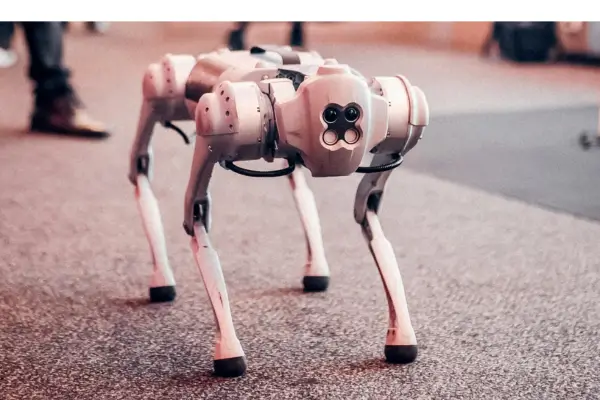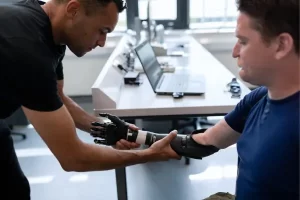In the rapidly evolving landscape of modern warfare, technology has become an indispensable ally for military forces worldwide. The integration of advanced technological innovations into military strategies has redefined how conflicts are approached, executed, and concluded. Among these innovations, robotic surveillance and drone technology stand out as pivotal elements, enhancing capabilities in intelligence gathering, reconnaissance, and operational efficiency.
Robotic surveillance encompasses a range of technologies designed to monitor, collect, and analyze data in real-time, often with minimal human intervention. These capabilities have proven invaluable in situations where traditional reconnaissance methods are inadequate or too risky, particularly in high-stakes environments. Drones, or Unmanned Aerial Vehicles (UAVs), serve as a critical component of this technological landscape, offering versatile platforms for surveillance, intelligence gathering, and even combat operations.
The integration of robotic surveillance and drone technology has ushered in a new era of military capability, enabling forces to gain unparalleled situational awareness while minimizing risk to personnel. However, as these technologies continue to advance, they also raise important questions about ethics, privacy, and the future of warfare. Issues surrounding the autonomous nature of these systems and their implications for human oversight are critical discussions in both military and civilian contexts.
In this article, we will explore the multifaceted roles of robotic surveillance and drones in military applications. We will examine their individual contributions, how they complement one another, the challenges they present, and the future trends shaping their development. Through this exploration, we aim to provide a comprehensive understanding of these transformative technologies and their implications for modern military operations.
Section 1: The Role of Robotic Surveillance in Military Operations
Definition of Robotic Surveillance
Robotic surveillance refers to the use of automated systems—ranging from ground robots to aerial drones—that perform monitoring and reconnaissance tasks without direct human control. These systems leverage advanced technologies such as artificial intelligence (AI), machine learning, and sensor integration to gather data, analyze environments, and respond to dynamic situations.
Types of Robotic Surveillance Systems
Ground Robots
Ground robots are unmanned vehicles designed to navigate various terrains while carrying out surveillance and reconnaissance missions. These robots can operate in environments that are hazardous for human soldiers, such as urban conflict zones or contaminated areas.
Key Features:
- Mobility: Equipped with tracks or wheels, ground robots can traverse rough terrain, obstacles, and varying environments, making them suitable for diverse operational contexts.
- Payload Capabilities: Ground robots can be equipped with a variety of sensors, cameras, and even weapons systems, allowing them to perform multiple functions from surveillance to bomb disposal.
- Communication Systems: Many ground robots are equipped with secure communication links that enable them to relay real-time data back to command centers.
Examples:
- PackBot: Widely used for bomb disposal and reconnaissance missions, the PackBot can navigate through complex environments and is equipped with cameras and sensors for data collection.
- Talon: Designed for surveillance and reconnaissance, the Talon can operate in diverse terrains and is often deployed in situations where human intervention is too dangerous.
Aerial Robots (Drones)
Aerial drones, or UAVs, play a vital role in modern military surveillance. These flying robots can cover vast areas quickly and provide real-time video feeds and data collection. They can be deployed for various missions, including reconnaissance, target acquisition, and even combat support.
Key Features:
- Flight Capabilities: Drones can fly at varying altitudes and speeds, allowing them to gather intelligence from multiple perspectives. Many drones can hover in place, providing stable platforms for surveillance.
- Sensor Integration: Equipped with high-resolution cameras, thermal imaging, and radar systems, drones can gather diverse types of intelligence under various conditions.
- Stealth Technology: Many military drones are designed to minimize their radar and thermal signatures, allowing them to operate undetected in hostile environments.
Examples:
- MQ-1 Predator: One of the earliest and most well-known drones, the Predator has been used extensively for reconnaissance and armed missions, equipped with sensors that provide high-quality imagery.
- MQ-9 Reaper: An evolution of the Predator, the Reaper is capable of carrying more payload, including missiles, and is used for both surveillance and combat operations.
Key Functionalities and Capabilities
Real-Time Data Collection
One of the primary advantages of robotic surveillance systems is their ability to collect data in real-time. This capability allows military commanders to make informed decisions quickly, enhancing operational effectiveness. Ground robots can navigate enemy territory while drones provide aerial overviews, ensuring that forces have up-to-the-minute information on enemy movements and environmental conditions.
Applications:
- Battlefield Monitoring: Robotic systems can continuously monitor frontline activity, allowing for immediate updates on troop movements and potential threats.
- Intelligence Gathering: Data collected can include video footage, environmental assessments, and the identification of enemy equipment, which can inform strategic planning.
Enhanced Reconnaissance
Robotic surveillance systems significantly enhance reconnaissance capabilities by providing detailed insights that traditional methods may not capture. Drones can fly over enemy positions and gather intelligence without exposing personnel to danger. The integration of high-resolution cameras, infrared sensors, and radar systems allows for a comprehensive assessment of the battlefield.
Applications:
- Strategic Planning: Detailed reconnaissance data helps commanders devise strategies tailored to current conditions and enemy capabilities.
- Risk Assessment: Enhanced reconnaissance can identify safe routes for troop movements and highlight areas of potential ambush.
Risk Reduction for Human Personnel
The deployment of robotic surveillance reduces the risk to human soldiers, particularly in high-threat environments. By using robots to perform dangerous tasks—such as inspecting potential explosives or monitoring hostile areas—military forces can minimize casualties while maintaining operational readiness. This risk reduction is critical, especially in urban warfare, where the dangers are unpredictable and life-threatening.
Applications:
- Explosive Ordnance Disposal (EOD): Ground robots can be deployed to assess and neutralize explosives, keeping human operators at a safe distance.
- Surveillance of High-Risk Areas: Drones can monitor enemy installations or troop movements without putting pilots or ground forces at risk.
The Evolution of Robotic Surveillance in Military Operations
Robotic surveillance systems have evolved significantly over the past few decades. Initially, these technologies were rudimentary and limited in scope. Early iterations relied on basic automation and simple sensors. However, advancements in technology have led to the development of sophisticated systems capable of performing complex tasks with high degrees of autonomy.
Historical Context
The roots of robotic surveillance can be traced back to the Cold War, when nations began experimenting with unmanned systems for reconnaissance purposes. These early efforts laid the groundwork for the advanced systems we see today.
- Cold War Era: Early UAVs were primarily developed for reconnaissance missions and were limited in capability. The focus was on collecting intelligence without risking pilots in hostile territories.
- Post-9/11 Era: The events of September 11, 2001, spurred rapid advancements in surveillance technologies as military forces sought effective ways to combat terrorism. The proliferation of drones during the Iraq and Afghanistan conflicts demonstrated their effectiveness in intelligence gathering and strike capabilities.
Technological Advancements
Today’s robotic surveillance systems are equipped with advanced technologies that allow them to operate effectively in a variety of environments. Innovations in AI and machine learning have enabled these systems to analyze data autonomously, improving their ability to identify potential threats and make decisions on the fly.
- Artificial Intelligence: AI has significantly enhanced the capabilities of robotic systems, allowing for better data analysis and autonomous decision-making. Machine learning algorithms can identify patterns in data, enabling predictive analytics in military operations.
- Sensor Technology: The integration of diverse sensors—ranging from electro-optical to multispectral imaging—has improved data collection, allowing for more detailed assessments of environments and targets.
Case Studies of Robotic Surveillance in Action
Operation Enduring Freedom (Afghanistan)
During the prolonged conflict in Afghanistan, robotic surveillance systems played a crucial role in intelligence gathering and operational planning. Drones were extensively used to monitor enemy movements, track supply routes, and identify potential targets, all while keeping personnel out of harm’s way. The data collected by these systems informed tactical decisions and significantly contributed to mission success.
- Tactical Advantage: The ability to gather real-time intelligence allowed commanders to adapt strategies quickly, often leading to the successful engagement of enemy forces.
- Humanitarian Efforts: Beyond combat, drones were also used for humanitarian missions, assessing damage after natural disasters and delivering supplies to remote areas.
Counterterrorism Operations
In counterterrorism operations, robotic surveillance has been employed to monitor high-risk areas and gather intelligence on insurgent activities. The ability to deploy drones for persistent surveillance has allowed military forces to identify and disrupt threats before they materialize, showcasing the effectiveness of these technologies in modern warfare.
- Target Identification: Drones have been instrumental in locating and tracking terrorist leaders and operations, providing critical intelligence for targeted strikes.
- Operational Efficiency: The use of robotic surveillance has streamlined operations, allowing military forces to allocate resources more effectively while reducing risks to personnel.
Conclusion of Section 1
The role of robotic surveillance in military operations is multifaceted and crucial for maintaining a strategic advantage in today’s complex battlefields. As technology continues to evolve, these systems will become even more integral to military planning and execution. The combination of ground and aerial robotic systems enhances situational awareness and operational effectiveness, enabling forces to respond rapidly to emerging threats. In the next sections, we will delve deeper into the specific applications of drones in military contexts and how they integrate with robotic surveillance systems to enhance overall operational effectiveness.
Section 2: Drones in Military Applications
Historical Context of Drone Usage in the Military
Drones have a rich history that dates back to World War I, when the idea of unmanned aerial vehicles was first explored. However, it wasn’t until the late 20th century that significant advancements led to the modern UAVs we recognize today.
Early Development
- World War I: The Kettering Bug, an early cruise missile, was developed as a “flying bomb.” While it was never used in combat, it laid the groundwork for future drone technology.
- Vietnam War: The U.S. military began using drones for reconnaissance missions during the Vietnam War, notably the Ryan Firebee, which provided valuable intelligence while minimizing risks to pilots.
Evolution in the 21st Century
- Post-9/11 Era: The events of September 11, 2001, catalyzed a significant expansion in the use of drones for military purposes. The U.S. military deployed drones for surveillance and combat in Afghanistan and Iraq, leading to the development of advanced UAV systems.
- Technological Advancements: Innovations in sensor technology, data processing, and communication systems have transformed drones into versatile tools for modern warfare.
Current Advancements in Drone Technology
Drones have evolved significantly, with modern UAVs equipped with sophisticated technologies that enhance their operational capabilities.
UAV Types
- Reconnaissance Drones:
- Designed primarily for surveillance and intelligence gathering, these drones carry high-resolution cameras and sensors to capture detailed imagery and data.
- Example: The RQ-4 Global Hawk provides real-time reconnaissance over large areas, capable of flying at high altitudes and covering vast distances.
- Combat Drones:
- Equipped with weapons systems, these drones can engage targets directly while also performing reconnaissance.
- Example: The MQ-9 Reaper can carry laser-guided bombs and missiles, providing a platform for both surveillance and precision strikes.
- Loitering Munitions:
- Often referred to as “kamikaze drones,” these are designed to loiter over a battlefield before engaging targets. They combine the features of a drone and a missile.
- Example: The Harop drone can be used to target high-value assets, making it a potent tool in asymmetric warfare.
Payload Capabilities
Modern drones can carry a variety of payloads that enhance their utility in military operations:
- Cameras and Sensors: Drones are equipped with electro-optical and infrared cameras, providing real-time surveillance capabilities even in low-light conditions.
- Communication Equipment: Some drones act as relay stations, extending communication capabilities in areas with limited infrastructure.
- Weapons Systems: Armed drones can deliver precision strikes against enemy targets, minimizing collateral damage and reducing risks to ground troops.
Case Studies of Drone Deployment in Recent Conflicts
Operation Iraqi Freedom
In Iraq, drones played a critical role in providing situational awareness and targeting information for ground forces. The use of UAVs allowed commanders to monitor insurgent activities continuously, leading to successful operations against enemy combatants.
- Surveillance Missions: Drones conducted persistent surveillance over key areas, enabling real-time intelligence updates that informed tactical decisions.
- Targeted Strikes: Armed drones were used for precision strikes against high-value targets, significantly impacting the operational capabilities of insurgent groups.
Ongoing Conflicts and Counterinsurgency Operations
In ongoing conflicts in regions like Syria and Yemen, drones have been used extensively for both reconnaissance and combat operations. Their ability to operate in hostile environments without risking human lives has made them invaluable assets.
- Intelligence Collection: Drones gather critical intelligence on enemy positions and movements, allowing for more informed strategic planning.
- Counterterrorism Operations: Armed drones have been deployed for targeted strikes against terrorist leaders and infrastructure, demonstrating their effectiveness in counterinsurgency efforts.
Ethical Considerations and Challenges
While the benefits of drones in military applications are substantial, their use raises significant ethical considerations and challenges that must be addressed.
Privacy Concerns
The pervasive use of drones for surveillance raises concerns about privacy violations, both domestically and internationally. The ability to monitor individuals and collect data without consent poses ethical dilemmas regarding civil liberties.
Autonomous Decision-Making
The increasing autonomy of drones, particularly in combat scenarios, raises questions about accountability and the moral implications of allowing machines to make life-and-death decisions. The potential for unintended consequences and collateral damage is a pressing concern for military strategists and ethicists alike.
International Regulations
As drone technology continues to evolve, the need for comprehensive international regulations becomes paramount. Establishing norms and guidelines for the use of drones in warfare and surveillance is essential to prevent misuse and ensure accountability.
Conclusion of Section 2
Drones have become a cornerstone of modern military operations, offering unparalleled capabilities in surveillance, reconnaissance, and combat. Their evolution over the past few decades has transformed the landscape of warfare, allowing for more precise and effective military strategies. However, as the use of drones continues to expand, addressing the ethical implications and regulatory challenges will be crucial in shaping their future in military applications.




